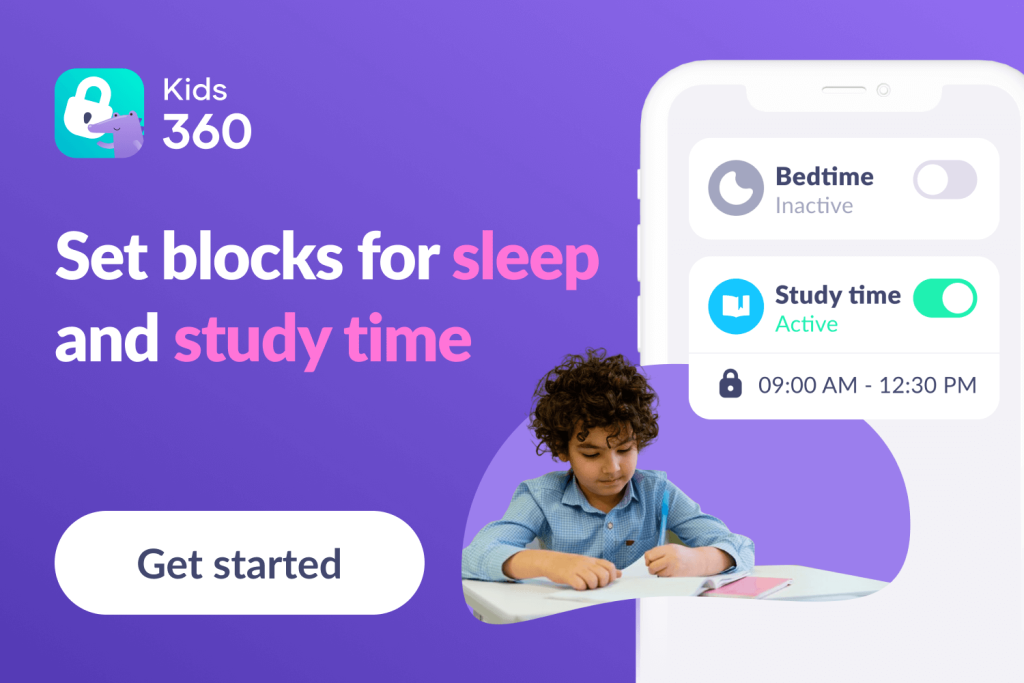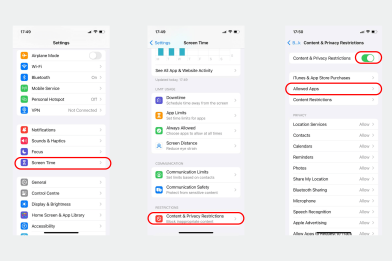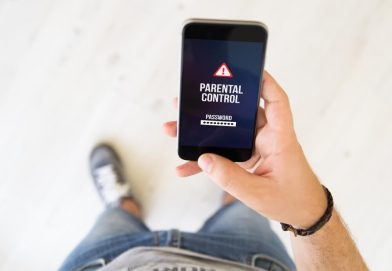Revealing the 5-Hour Screen Time: What Kids are Doing on Their Phones
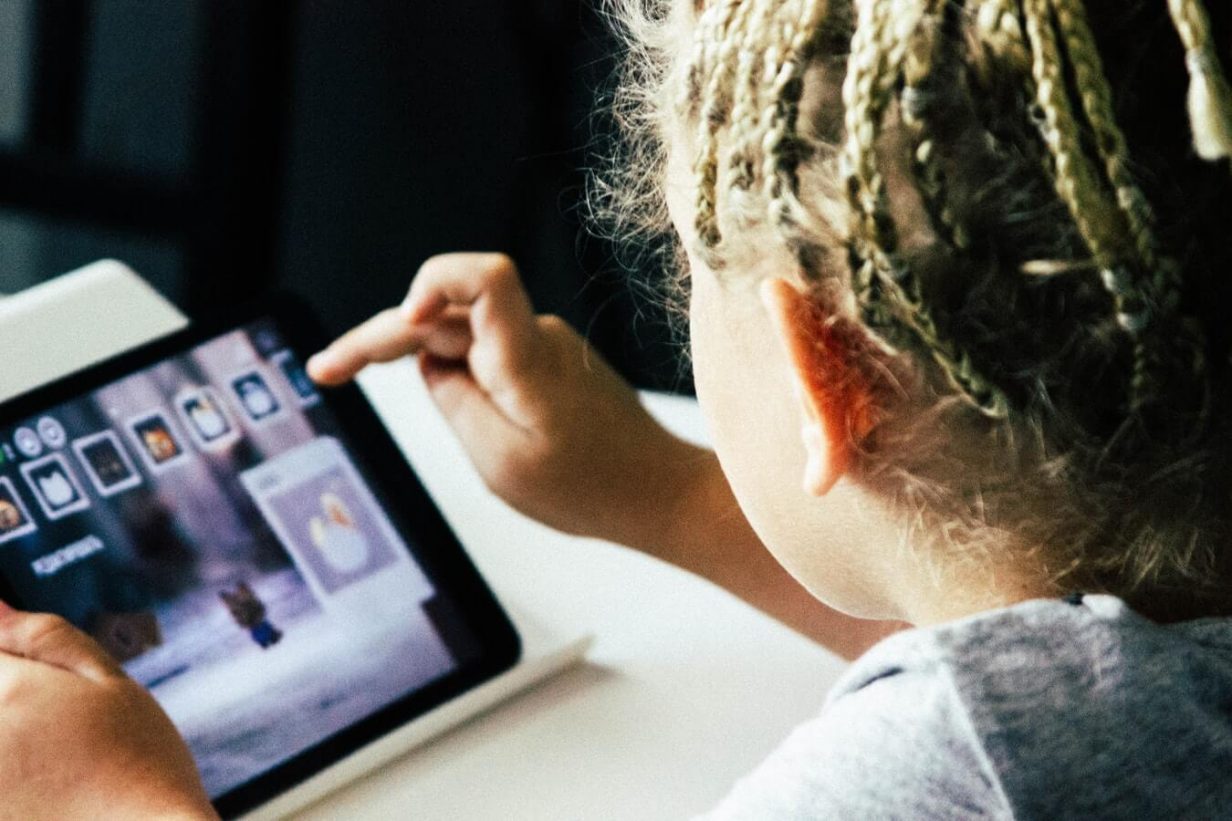
Cell phone usage statistics for today’s young people show just how much younger generations, like Generation Z, use their mobile phones. The exact smartphone usage statistics vary, with the average smartphone user looking at their mobile device more than 100 times per day. Some active users use their phones even more often than that, spending hours glued to the screens, taking a toll on both their physical and mental health.
This issue isn’t just limited to young smartphone owners, with many American adults now suffering from cell phone addiction and unhealthy amounts of daily screen time. But younger generations, growing up as smartphone users and internet users from an early age, are most at risk of suffering the consequences.
Naturally, many parents want to find ways to protect their children in this changing world. They may, for example, want to know just how many hours per day their kids spend on their devices. Being able to view smartphone usage statistics, like overall daily phone time and the amount of minutes and hours on each app, can be invaluable in spotting situations of cell phone addiction or improper usage.
Findmykids understands these kinds of concerns, as well as the importance of child safety and parent peace of mind. That’s why we developed a service to help you monitor smartphone usage statistics for young, active users in your family. We also conducted a 2023 study*, reviewing app data from close to 2 million British and American children, to better understand today’s young mobile users.
*We comply with the data privacy policy, and all data in the service is kept anonymous. This means that we have a general idea of what apps children use, but we cannot relate specific data to a specific child. KidSafe Seal Program has certified that the Findmykids App “meets the standards of online safety and/or privacy.”
Contents:
- How Much Time Do Children Spend on Gadgets?
- Top 10 Apps in the US and the UK
- Research Findings and Conclusions
- How to Protect Your Child: Tips For Parents
- FAQs
How Much Time Do Children Spend on Gadgets?
We have found that on average, children spend around 4.5-5 hours a day on their devices. Interestingly, on weekends, children spend 30 minutes more on their gadgets compared to weekdays.
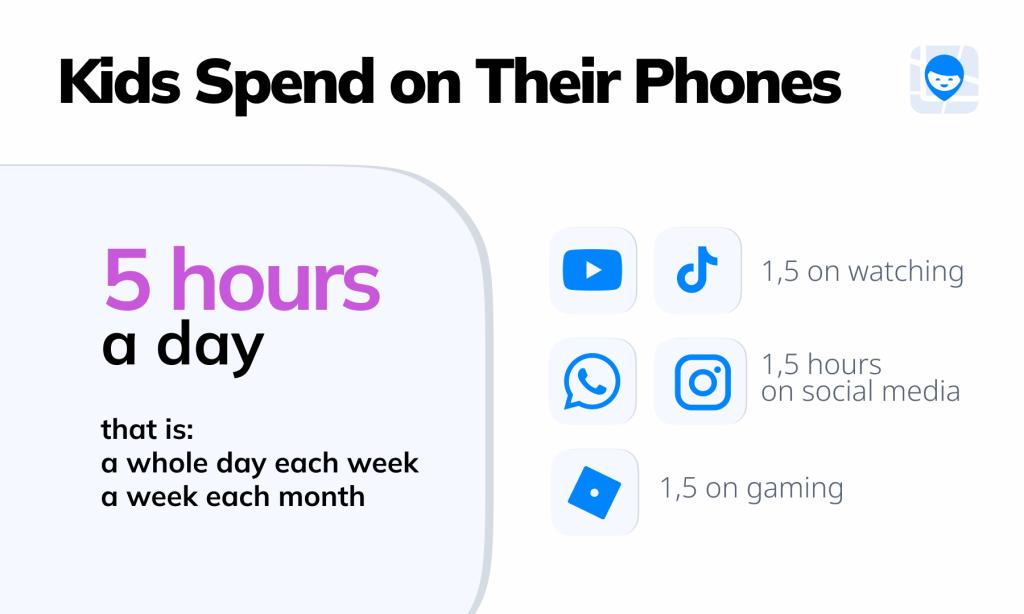
According to the FMK study
In a day, children spend an average of 1.5-2 hours on social media and watching videos, and a similar amount of time on games. These numbers can be concerning for parents, especially if they are unaware of the specific apps their children are using.
These trends are part of a broader picture of smartphone use.
Key Smartphone Usage Statistics for 2025
Smartphone usage continues to rise in 2025, with 7.21 billion global users and 97% penetration among adults aged 18–49. On average, individuals spend 4–5 hours per day on their phones, with Americans reaching for their devices up to 352 times daily. Teens are especially engaged: 72% check messages immediately upon waking, and 3 in 4 Gen Zers admit to excessive screen time. Other notable habits include checking phones in the bathroom (75%) and unlocking devices 150 times per day, illustrating how deeply smartphones are embedded in daily life.
Below, we will discuss each of the apps that have captured children’s attention and try to understand why they have become so appealing. Our goal is to help parents better understand how their children are using their gadgets and provide them with tools to protect their children in the online space.
Top 10 Apps in the US and the UK
Most of the apps that children use can be divided into four categories: entertainment, social networking, games, and others (including your device’s default apps). Of these apps, about 25% of total usage is spent on entertainment apps. Games make up 20%, social networking apps and messengers are close behind with 17%, and other apps make up only 8% of overall usage.
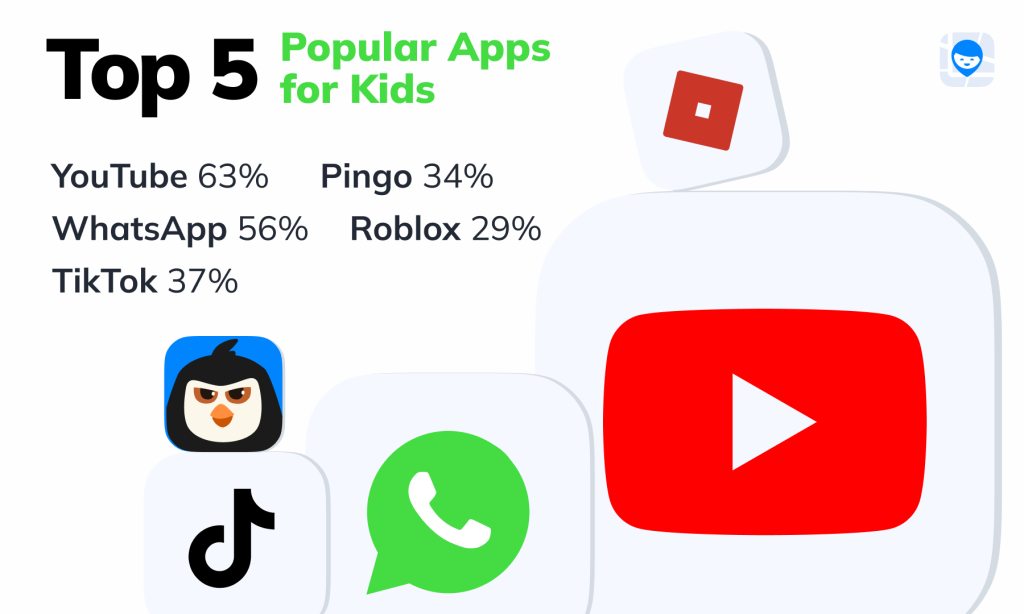
According to the FMK study
Below is a table that puts the most popular apps into these four categories:
| ENTERTAINMENT | SOCIAL NETWORKS | GAMES | OTHER | |
|---|---|---|---|---|
| 1 | YouTube | Roblox | Google Play | |
| 2 | Chrome | Brawl Stars | Pingo (Findmykids) | |
| 3 | TikTok | Subway Surfers | CapCut | |
| 4 | Spotify | Snapchat | Stumble Guys | Galaxy Apps |
| 5 | Viber | Toca Life World | Callings | |
| 6 | Netflix | Discord | Minecraft | Shein |
| 7 | YouTube Music | FIFA Mobile | ||
| 8 | Among Us |
⠀
A few of these popular apps claim to be suitable for children, but there can be content that our children can see that companies like Google Play have no way of regulating. Let’s take a closer look at those questionable apps, as well as a few other applications that may be more suitable for your family.
Entertainment
YouTube
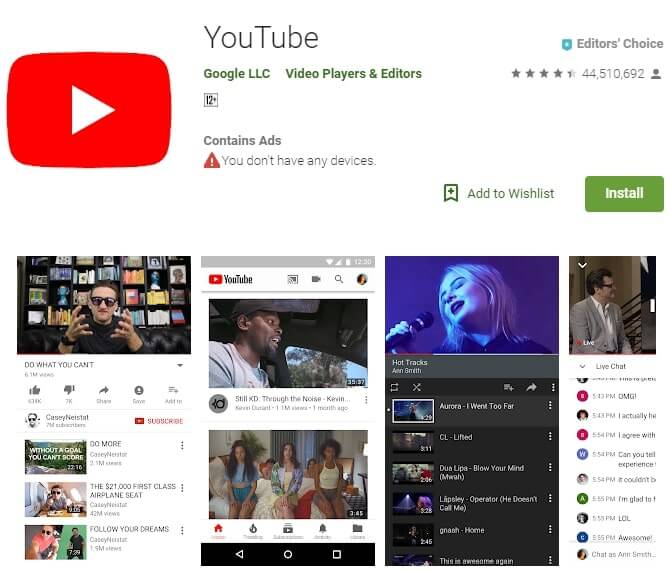
Google Play
62% of the children participating in our study use YouTube. The average time they spend watching videos on the platform is 91 minutes, or an hour and a half.
YouTube is probably the most popular global app available for free download. Even though it’s rated for teens, YouTube has done a good job of weeding out inappropriate content and making it safe for children. From properly rating videos to blocking inappropriate content for those who are not of age, YouTube is a trusted app by parents.
With the recent, stricter guidelines, even comments are monitored, and with the world watching, inappropriate content (videos and comments) tends to be reported quickly. While not every obscene comment or video is reported for inappropriateness, a little monitoring on your part will help keep things clean for your children. In all, YouTube is a safe app for children as long as parents monitor the content and their children’s Android or iOS devices.
Chrome Browser
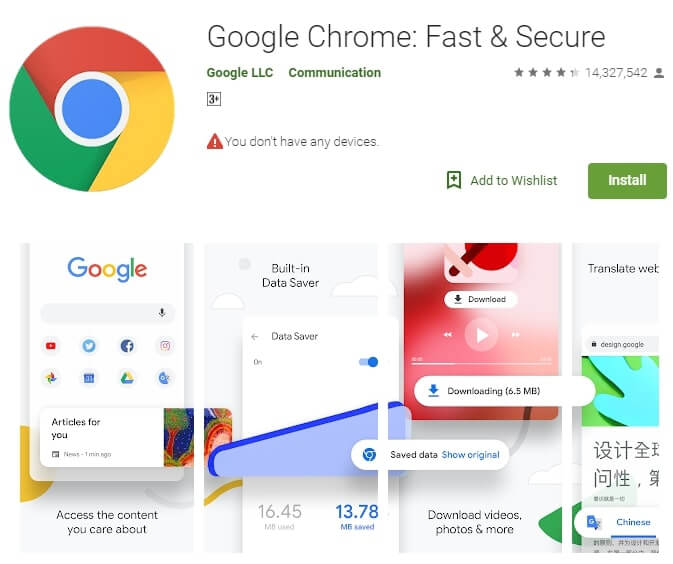
Google Play
It’s safe to say that a majority of our children (62%, to be precise) use Chrome when surfing the web. As with any web browser, the entire internet is accessible with a click of a button, and with an incognito option on almost all browsers, the sites that are visited cannot be tracked by you.
Allowing our children to access the internet is a big step in the trust department. However, there are certain precautions you can take before handing the mouse over.
Place as many restrictions as you deem necessary and talk to your children about proper browsing behavior before heading to Google Play.
TikTok
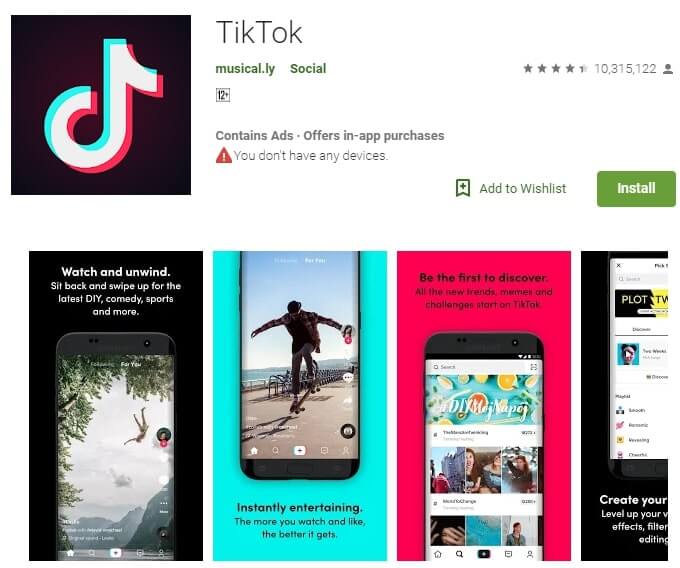
Google Play
One out of every three children uses it, with a record-breaking usage time of 117 minutes per day.
TikTok has become a popular app for younger children. Even though there is an age limit of 13 years old, somehow, many younger children find their way onto the app. It isn’t difficult to bypass the age restriction; you simply need to put in a different birth year.
Their guidelines explicitly warn against the posting or sharing of sexual content, and should they become aware of any content being shared with or involving minors, they will involve the authorities. While this is somewhat of a relief, these offenses must be made aware TO the developers. So unless the offensive person or content is reported, there is nothing to keep our children from being affected by it beforehand.
Pingo
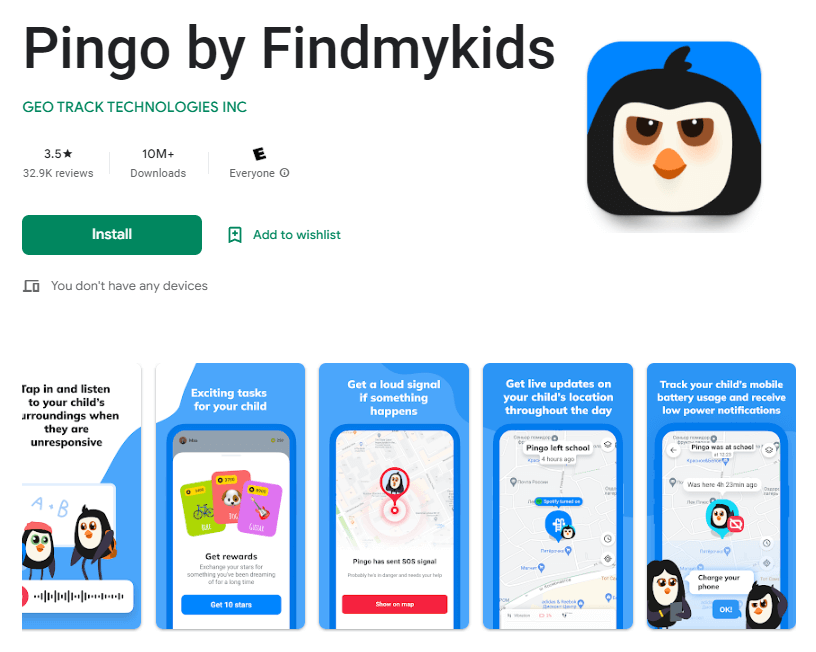
Google Play
A children’s app that works in tandem with Findmykids. It is accessed daily by every third child, benefiting not only them but also their parents!
The app collects information about the child’s location and sends it to the parent. In Pingo, children can communicate with their parents or send an external SOS signal for help. Additionally, the app offers a dedicated entertainment section with various activities for children, including educational, creative, and useful tasks. Unlike other apps, the content in Pingo is designed specifically for children and undergoes strict moderation by psychologists. Your child will not find anything dangerous or traumatizing here. Furthermore, all location data is stored in encrypted form, as confirmed by official documentation.
Pingo is absolutely safe for children and highly beneficial for parents, as they always know where their child is and what is happening around them. If you haven’t tried the Findmykids GPS tracker and Pingo app yet, we highly recommend it!
Spotify
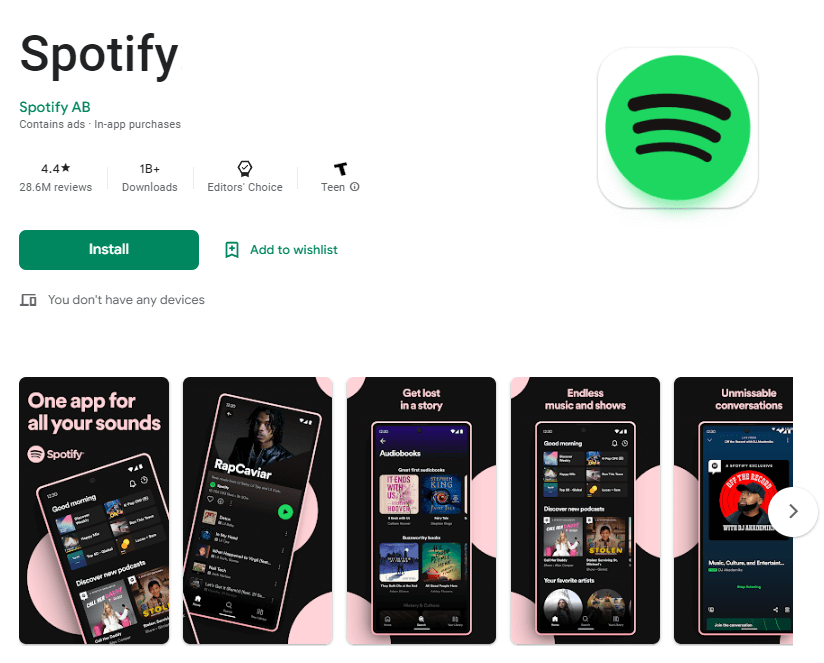
Google Play
Spotify is a digital music streaming platform that offers a vast library of songs, albums, and podcasts. It allows users to discover, listen to, and share their favorite music with others. With its user-friendly interface and personalized recommendations, Spotify has become a go-to app for music enthusiasts of all ages, including children and teenagers.
Spotify itself is not inherently dangerous for kids. However, as with any online platform, there are potential risks that parents should be aware of and take precautions to mitigate.
One concern is the explicit content that may be available on Spotify. While the platform provides some content filters, it’s not foolproof, and explicit songs or explicit versions of songs may still be accessible. Another aspect to consider is the social features of Spotify. Users can follow others, share playlists, and interact with friends. While this can be a positive way for kids to engage with their peers, it’s essential for parents to discuss online safety and privacy with their children.
Regarding age restrictions, Spotify’s terms of service state that users must be at least 13 years old to create an account. However, it’s important to note that age restrictions are self-reported and may not always be strictly enforced. Parents should use their judgment to determine if their child is mature enough to use the platform responsibly.
Netflix
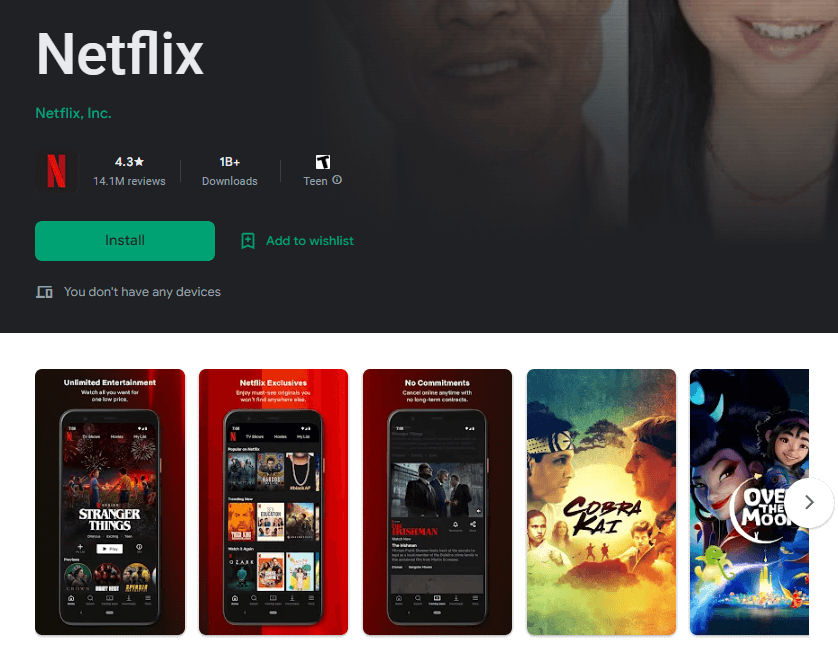
Google Play
Netflix is a popular streaming platform that offers a wide variety of movies, TV shows, documentaries, and original content. It has gained popularity among both adults and children due to its extensive library and convenience.
Netflix is not inherently dangerous for kids, but parents should note that it offers a wide range of content, including movies and TV shows that may only be suitable for some age groups. While there is a dedicated kids’ section with age-appropriate content, it’s crucial for parents to monitor what their children are watching and ensure it aligns with their family’s values and guidelines.
Excessive screen time can have negative effects on children’s health and well-being. It’s important for parents to set limits on the amount of time their children spend watching Netflix (based on our data, children spend approximately one hour a day on the app) and encourage a balanced lifestyle with other activities such as outdoor play, reading, and social interaction.
Regarding age restrictions, Netflix provides content ratings that indicate the intended audience for each program. These ratings are guidelines to help parents make informed decisions about what their children can watch.
Social Networks
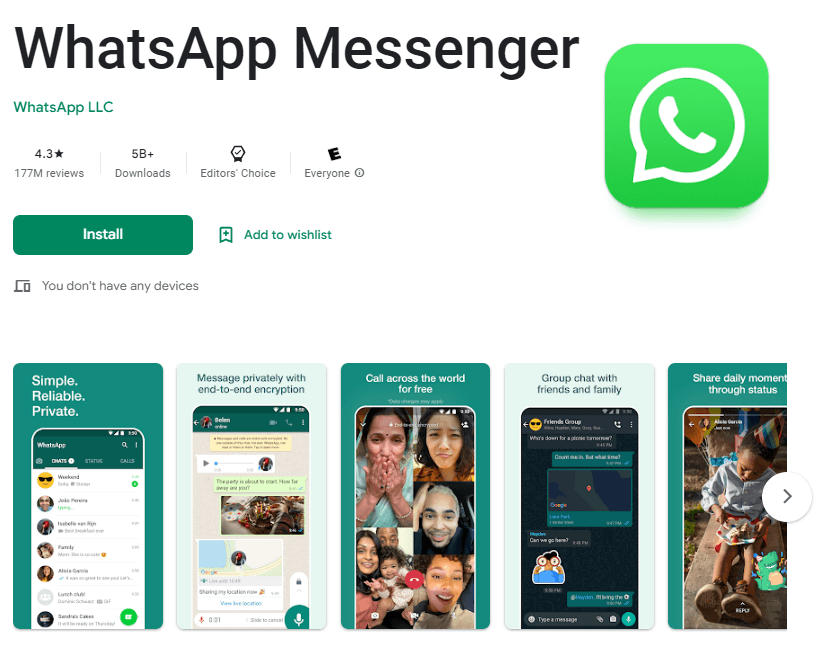
Google Play
It is the most popular messaging app among children, used by every second child, with a usage time of 33 minutes per day.
WhatsApp allows users to send text messages, voice notes, photos, videos, and make voice and video calls over the internet. It is available on most mobile devices and can be used to communicate with people around the world. The app is loved for its simplicity and fast performance, and it can be downloaded for free.
The problem lies in the fact that parents cannot monitor what children are exchanging in their conversations, and there is no control over who can contact them on WhatsApp. Anyone can message your child on WhatsApp.
It is also worth noting that WhatsApp does not encrypt messages in the cloud, so storing confidential information in the app can be risky.
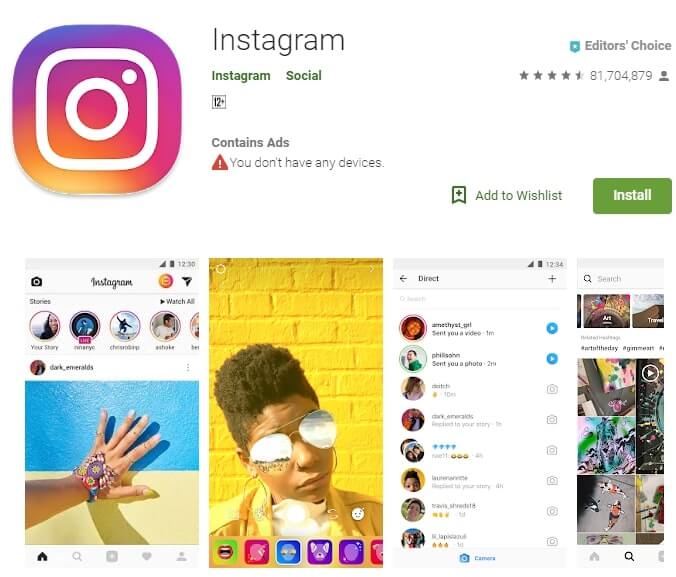
Google Play
25% of children have this application on their phones. They spend a minimum of 51 minutes per day in it (almost a whole hour!).
Rated T for teens, Instagram is far from a kid-friendly app. Even though they loosely monitor the posting of sexual or explicit photos and videos, they cannot regulate comments or messages. Luckily, you must verify your age before you can create an account (you must be 13 years or older). You also need to log in before you can view certain images and videos.
We suggest that you talk to your children about what they do and see on Instagram. It would also be wise to sign out of Instagram on your devices if you often let your children play on them.
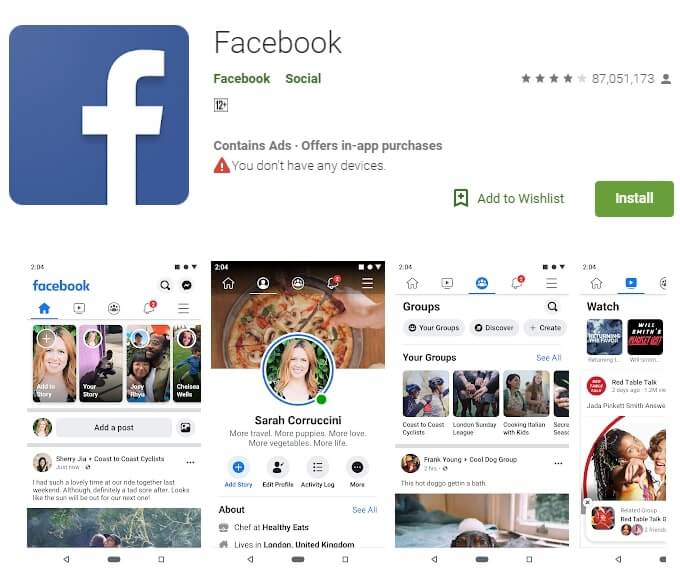
Google Play
23% of children use it for 40 minutes per day.
We all know about Facebook and the extremely explicit content that we and our children can come across. The popular social network is known to be a breeding ground for cyberbullying, sexual content, violence, and terrorist rhetoric, and with the addition of Facebook Live, it has been very difficult for regulators to control the content that is posted and shared.
Facebook is not recommended for children under the age of 13. We, as parents, must watch our children closely. Pay attention to who they private message, which communities they become a part of, and the kinds of posts they like and comment on.
Snapchat

Google Play
20% of children use it for 28 minutes per day.
Similar to Instagram or Facebook, Snapchat is also rated for teens and has an age restriction of 12 years old and younger. When creating an account, you are asked to enter your birthdate, and this verifies your age. If the birthdate proves that the child is under 13 years old, they are redirected to SnapKidz, a child-friendly version of the app.
Regardless of the age restriction, developers and regulators fail to see that 13-year-olds are still children. The number may be in the teens, but one can argue that the mind of a 13-year-old is still typically very immature and deeply impressionable. Given the often very adult content posted by many Snapchat users, the odds that our children will come across something inappropriate are very high.
Snapchat has guidelines that prohibit the use of sexually explicit content in snaps, but again, private messages aren’t monitored or regulated, and our children can still connect with any Snapchat user. You can change a few settings to make your child’s profile more secure, but you should still pay attention to how they use the app.
Related: Is Snapchat Safe for Kids?
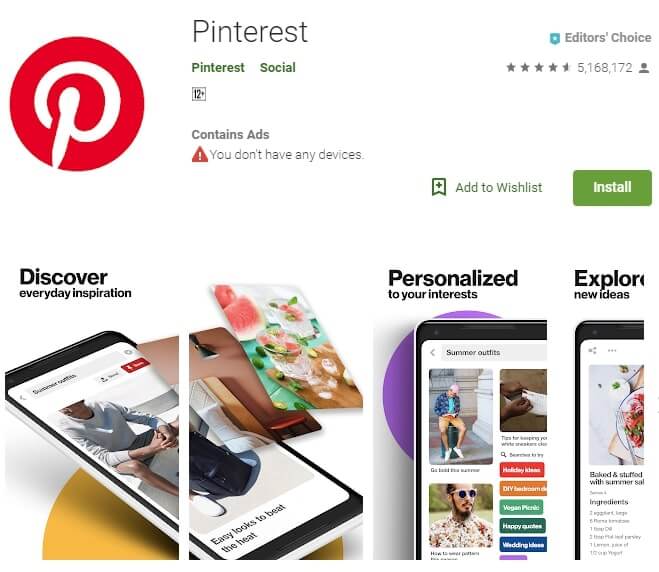
Google Play
13% of children use it for 15 minutes per day.
Pinterest is an app for creative minds and inspirational ideas. Usually used by people who are looking for ideas and cool new finds, Pinterest is a relatively safe place for children.
It is rare to come across something inappropriate unintentionally on Pinterest. In order to use Pinterest, you need to input your interests. Once you’ve established the things you’re into, they will compile a feed of posts and images that is specific to your likes.
With it being this heavily customized, it is very unlikely that your feed will show you anything you haven’t asked to see. We suggest creating an account with your child and watching them choose their interests. As long as they don’t select anything you deem inappropriate, they should be safe.
Games
Roblox
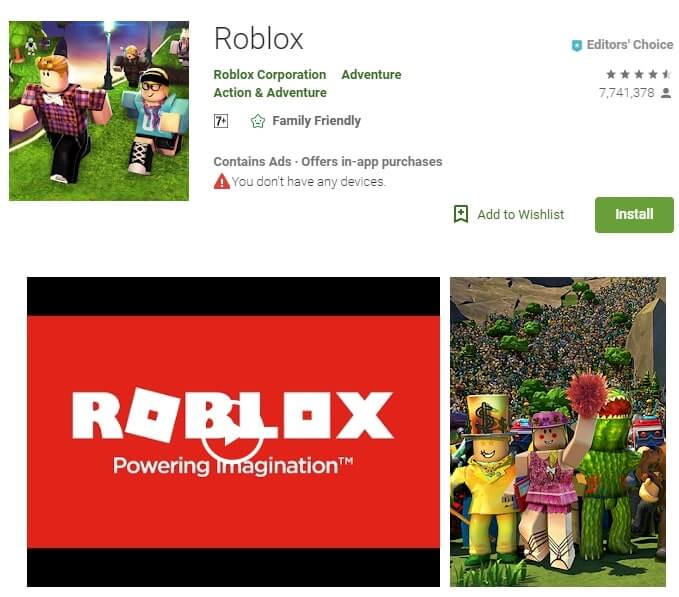
Google Play
Roblox is the most popular among kids online virtual open-world game that brings users from all around the world together in one place (one out of every three children plays this game). It is rated for everyone ages 10+ but this does mean, however, that children can meet and converse with adults without your knowledge.
Roblox has many security options for parents to customize before giving their children access. This includes disabling chatting, allowing age visibility, and enabling an account restriction that will allow your child to see games that are in his or her age range.
While Roblox is relatively safe, there are a few issues (predators, bullying, etc.) that kids can encounter. The amount of time they spend in the virtual world is also worth noting. Averaging nearly 75 minutes per day, children are spending quite a bit of time playing this game. Read this ultimate guide to learn how to keep your children safe.
Age restriction: 10+
Brawl Stars
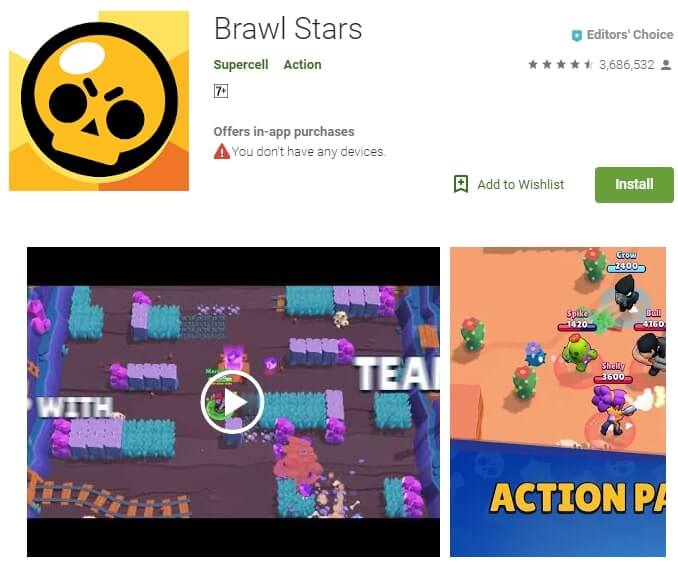
Google Play
Brawl Stars is another open-world shooting game that rewards players for finding weapons and killing their opponents. Played by gamers worldwide, Brawl Stars has a large following and a high number of players at any given moment.
Its cartoony style and unrealistic weaponry make this a safer bet for children. There is also no blood or gore on screen. The biggest issue is the overall violence. The whole purpose of the game is murder, even if it is animated.
We feel that this game is relatively safe, but swe uggest you discuss the use of violence with your children. Also, keep an eye on how long your children play this game. On average, children spend around 33 minutes per day playing Brawl Stars.
Age restriction: 10+
Toca Life World
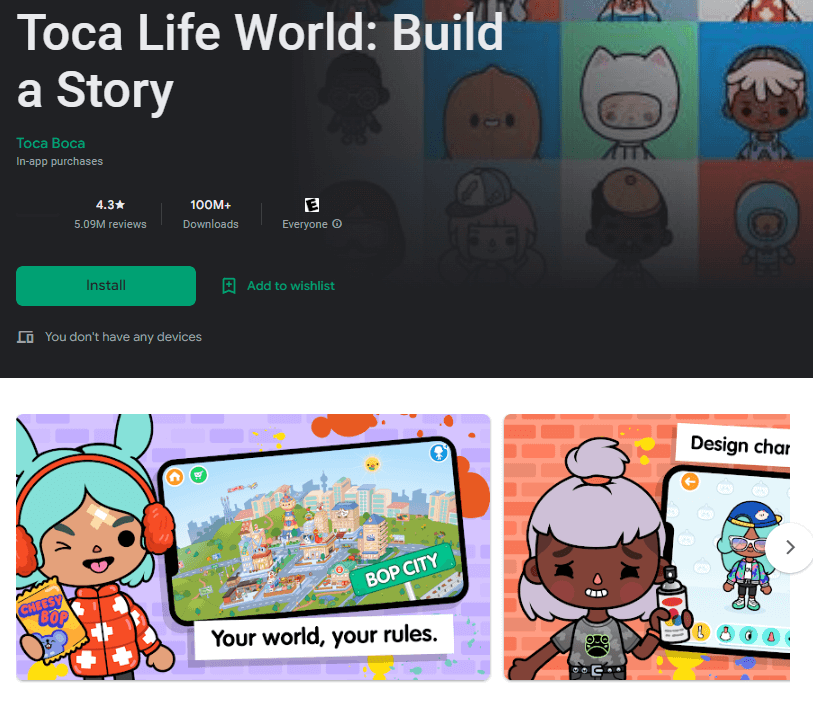
Google Play
A children’s game that allows kids to create their own worlds and explore them. The game features various locations such as a city, an island, a farm, an amusement park, and more. Each location contains different characters and objects that can be used to create their own stories.
Keep in mind that the game offers the option to communicate with other players through chat. Adjust the appropriate privacy settings and talk to your children about how to interact with others online.
Ensure that your child understands that it’s just a game and that real life is different from the virtual world. Explain to them that some things they can do in the game are not appropriate in real life.
Age restriction: 6+
Minecraft
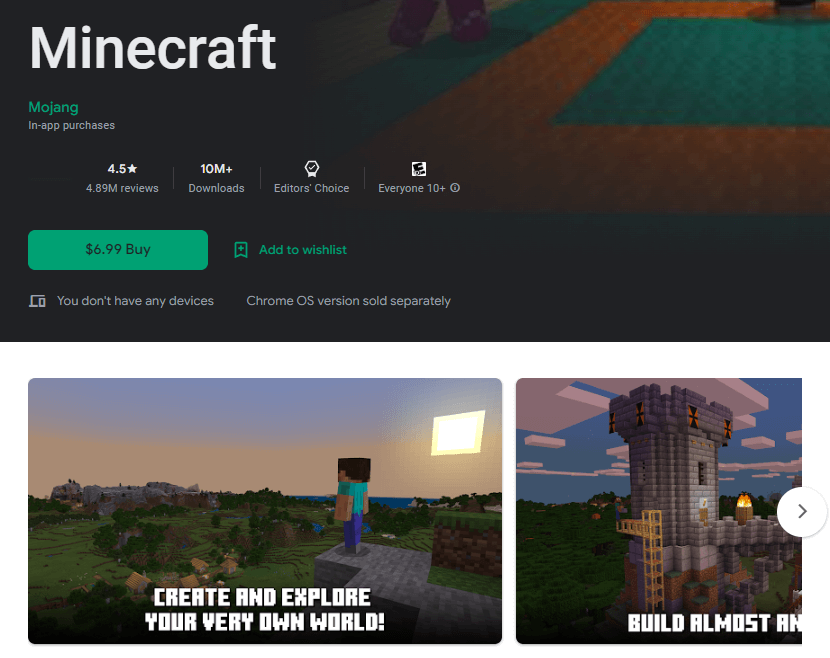
Google Play
Minecraft is a popular sandbox game that offers a creative and immersive virtual world for players to explore and build. It allows players to construct and customize their own structures, interact with various objects and creatures, and embark on exciting adventures.
Children are drawn to Minecraft because it stimulates their imagination, encourages creativity, and offers a sense of freedom and autonomy within the game. It promotes problem-solving skills, critical thinking, and collaboration as players can engage with others in multiplayer mode.
The age restriction for Minecraft is generally recommended for players aged 10 and above. However, this may vary depending on a child’s individual maturity level and parental discretion.
Research Findings and Conclusions
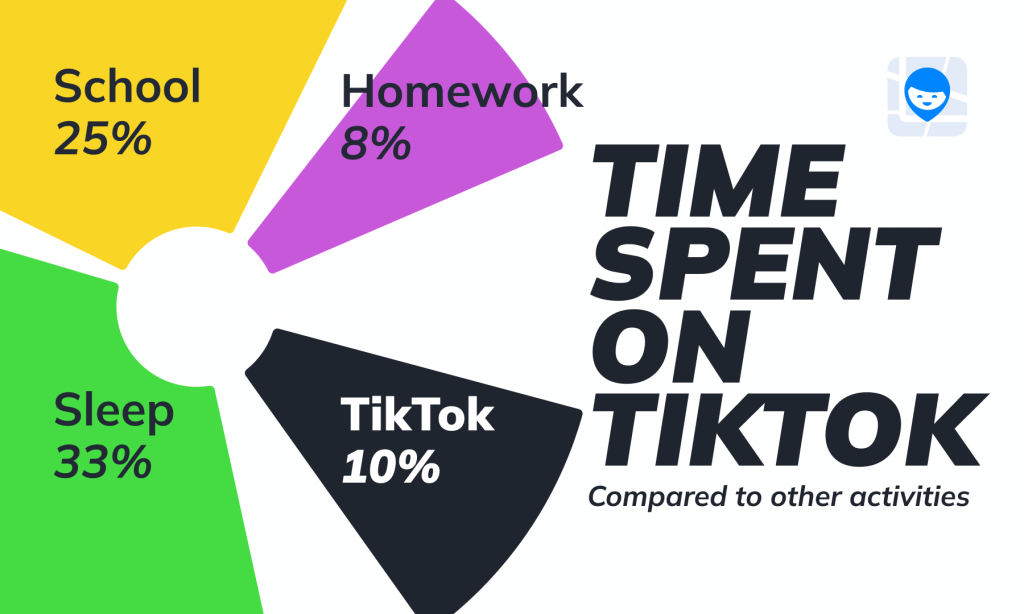
According to the FMK study
Based on our data, we have come to the following conclusions about how nearly two million children use their gadgets:
- Children spend up to 5 hours a day on their phones, which is a significant amount of time that parents should take into consideration. It is important for parents to be aware of how their child spends almost a third of their day.
- The top apps used by every second and third child include two entertainment apps (YouTube and TikTok), the messaging app WhatsApp, the Chrome browser, and the Roblox game.
- YouTube and TikTok have become time-consuming for children, with kids spending about one and a half hours on each app. Additionally, games like Roblox, Minecraft, and the Netflix service capture children’s attention for about 50 minutes.
- Children spend a lot of time on platforms like TikTok and YouTube due to the variety of available content. Videos on these apps are usually short and engaging, which captures children’s interest and holds their attention for a long time.
- Instagram has become the leader among social media platforms for children, with kids spending up to 50 minutes a day on the app, similar to their time spent on games.
- Roblox has unquestionably dominated the gaming scene for children for the second consecutive year. Additionally, parents should also pay attention to the game Minecraft, as children spend a significant amount of time playing it.
Video content is of great interest to children, as they watch, imitate, and even create their own videos. Parents should stay informed about the trends their child is interested in and the content they consume on video platforms.
Gaming comes in second place in terms of children’s interests. Often, game content has age restrictions that children may not be too concerned about. Parents need to monitor their child’s excessive involvement in virtual worlds, as there is a risk of developing gaming or gadget dependency. However, overall, it is normal and understandable for children to have an interest in various games.
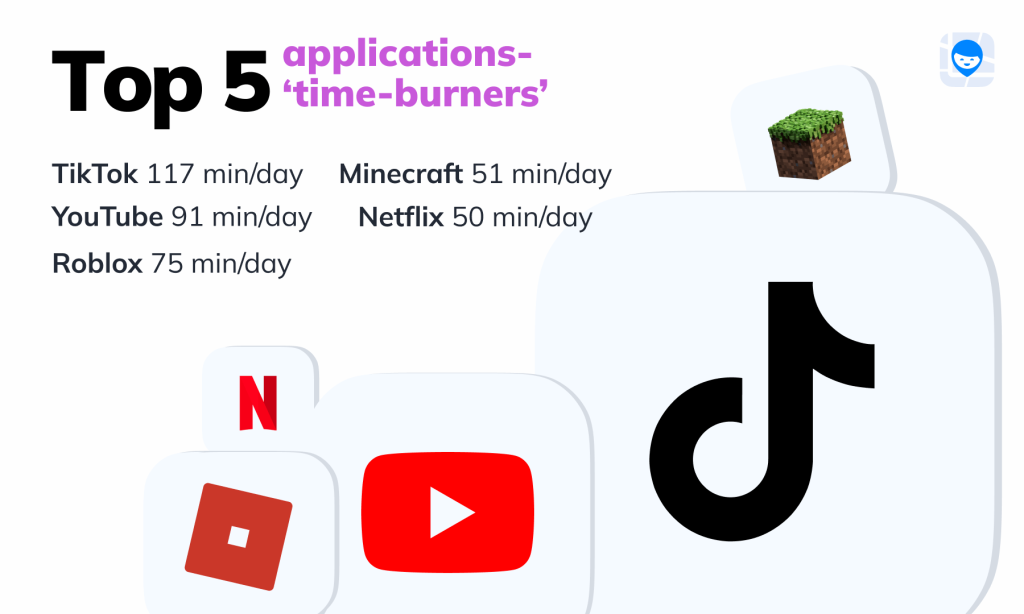
According to the FMK study
Social media takes the third spot. Children are active users of all popular social media apps today. They spend a significant amount of time on these platforms, which gives parents an opportunity to discuss topics such as cyberbullying and the stereotypes propagated in online communities.
There is a belief that an excess of visual and gaming stimulation can have a negative impact on children’s development. Therefore, it is important to monitor the amount of time children spend on games, video viewing, and social media, as well as the content they consume. Parents can engage in conversations with their children about their interests in social media, games, and apps to understand their preferences and discuss what can be not only interesting but also beneficial for their development.
The conclusion is simple: gadgets are capturing more and more of children’s attention and time. It is important for parents to monitor how much time their child spends on games and video viewing to prevent an imbalance in their daily routine and to identify early signs of gadget dependency. Additionally, it is important to discuss children’s interests, which will help parents understand the content their child consumes and timely replace unhealthy or dangerous interests or prevent traumatizing information from reaching their child’s consciousness.
How to Protect Your Child: Tips For Parents
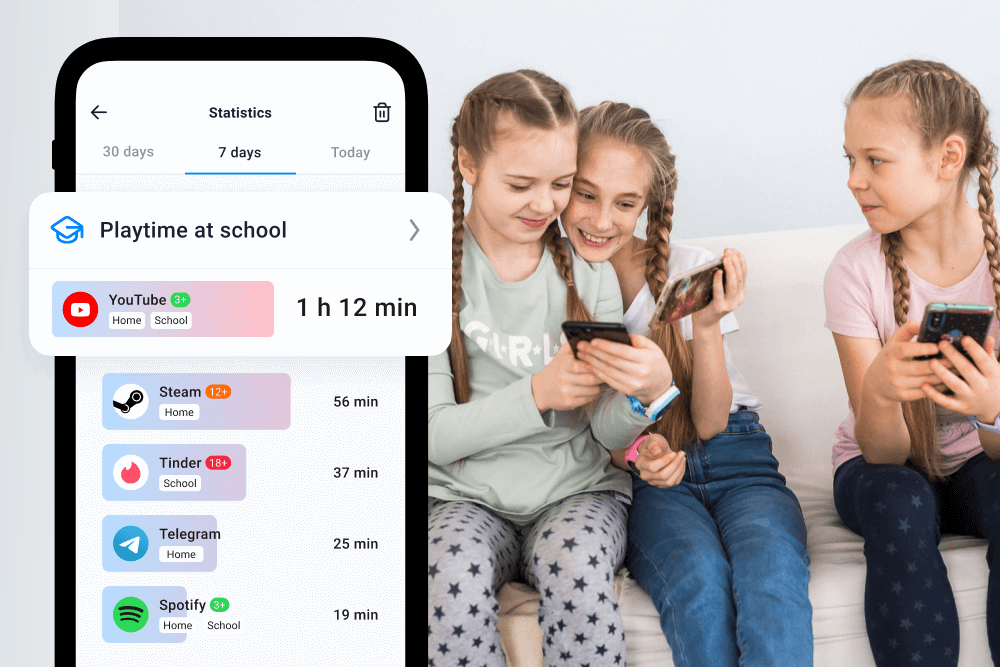
Findmykids app
As parents, we need to become more creative in the ways we choose to protect our children.
- Talk to your children about what is appropriate and what isn’t. Having these discussions is important and will give your children the ability to make these decisions on their own.
- Always review ratings guidelines and settings before allowing your child to play. Knowing what to expect from an app and checking for factors will help you decide what’s suitable for your children.
- Use the Findmykids app. You will have access to app usage statistics, including the amount of time your child spends on them. Combined with other features of the service, such as GPS navigation, Sound Around, and route history, you ensure comprehensive online and offline safety for your child.
- If simple app usage statistics are not enough for you, we recommend the Kids360 app. Its functionality is extensive: you can set limits on when, how much, and which apps your child can use; restrict access to apps containing dangerous and inappropriate content. Pull your child away from their smartphone during study time or before sleep by setting a schedule for gadget usage!
High activity of children in mobile applications should indeed concern parents, but there are also positive aspects: children develop communication and social skills, enhance their cognitive abilities through challenging games, access educational materials, broaden their horizons, and more. It is crucial to properly monitor the time children spend on their phones and teach them how to use gadgets safely. This way, modern technology will only bring benefits!
FAQs
How to check phone usage statistics?
Checking smartphone usage statistics can be a helpful way to spot cell phone addiction or other issues affecting modern mobile users. The process varies from device to device. Android smartphone users can look in the “Digital Wellbeing and parental controls” to see phone screen time habits and stats, for example. On other devices, you might want to install a third-party app to monitor smartphone usage statistics for you, like Findmykids or Kids360.
What do people do 144 times a day?
Some studies show that people, particularly those of the Millennial or Generation Z age groups, check their phones 144 times a day, on average. These smartphone usage statistics were collected in surveys, proving the extent of cell phone addiction in the modern age, where many people use smartphones for internet access and dedicate large parts of their daily time and daily lives to using their phones.
How many hours a day does an average person spend on their phone?
Cell phone addiction surveys and smartphone usage statistics suggest that people spend between four and five hours of their daily lives on their phones. Some active users of Generation Z and Alpha can spend even longer, possibly leading to physical issues, like eye strain, and mental problems associated with cell phone addiction, for the most active users. Some cell phone addiction sufferers only put their devices down when their phone battery runs out.
Is phone usage increasing?
Yes. Mobile phone ownership is increasing, and there are more active users than ever, around the world, with many kids given phones at younger ages than ever. This also means that phone usage rates are rising, as well as cases of cell phone addiction and related issues.
Проверьте электронный ящик














